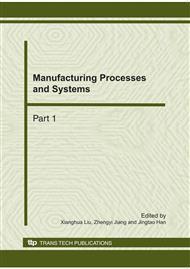p.644
p.649
p.653
p.659
p.664
p.668
p.674
p.679
p.683
Effect of Melt-Casting Temperature on Bonding Zone of CuNiMnFe30CrMnSi Integral Material
Abstract:
The effect of melt-casting temperature on the microstructure and properties of transition interlayer for CuNiMnFe/30CrMnSi material was investigated in vacuum condition. The results show that the thickness of the transition layer and its bond strength increase, and then decrease with increasing temperature. At 1130 , the intermediate transition layer has the largest width, which is 132μm, and the tensile strength can reach up to 1322Mpa. In the intermediate transition layer, mutual diffusion occurs among these alloying elements. These elements, such as Cu, Ni and Mn, diffuse into 30CrMnSi and results in the formation of Fe base solid solution, and no harmful brittle phases are produced in the proximity of bonding interface, thus it has a good metallurgical bonding for the two materials.
Info:
Periodical:
Pages:
664-667
Citation:
Online since:
October 2010
Authors:
Keywords:
Price:
Сopyright:
© 2011 Trans Tech Publications Ltd. All Rights Reserved
Share:
Citation:


